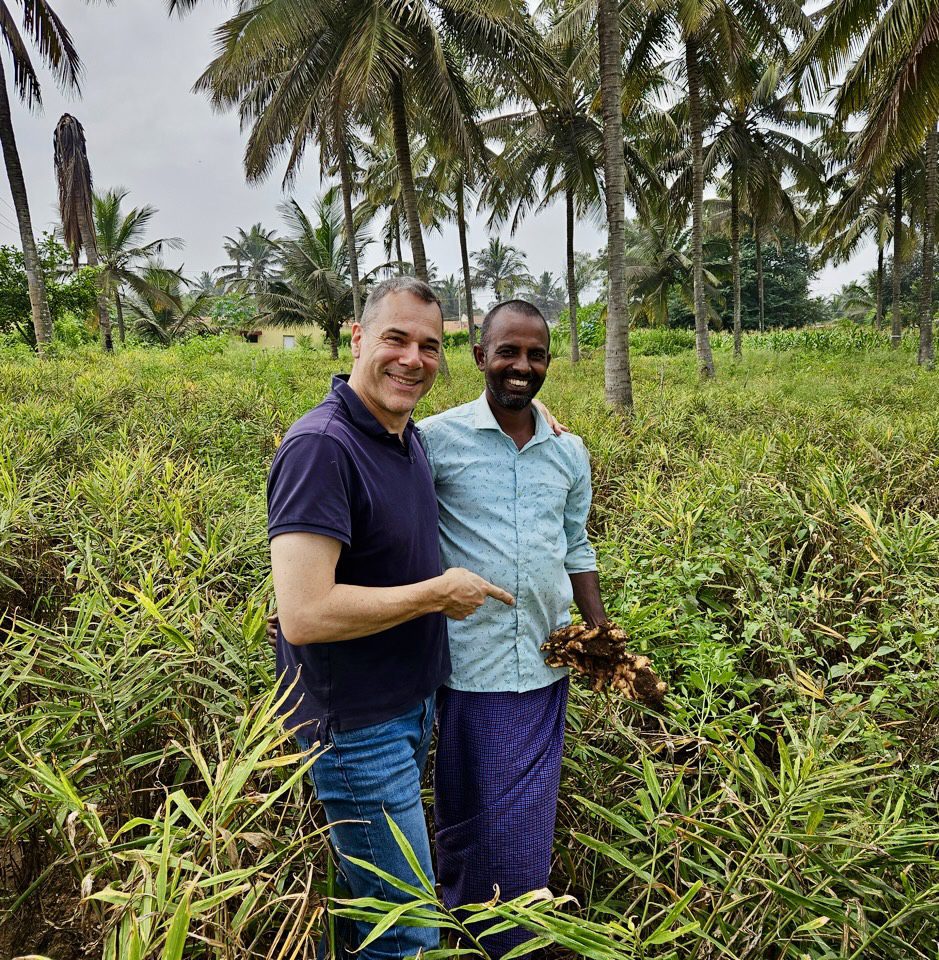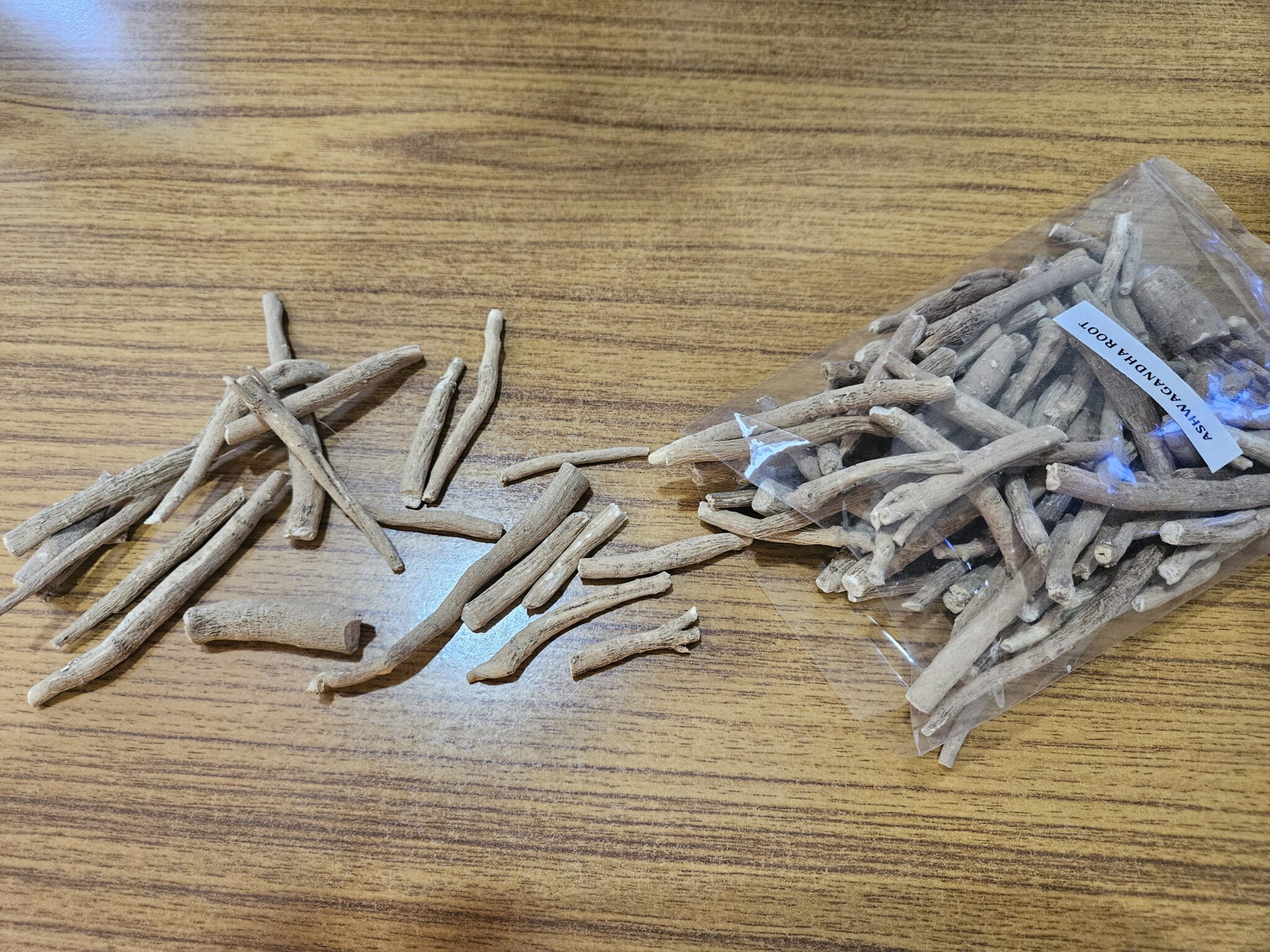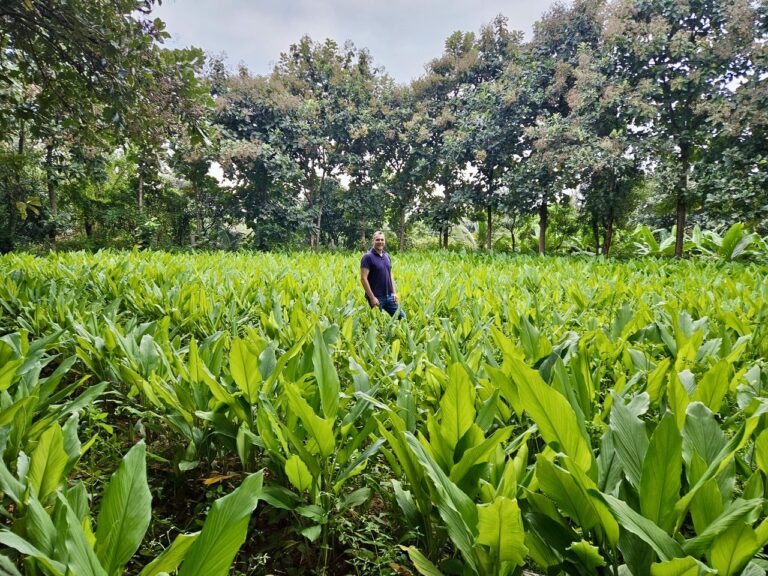Turmeric, ginger and ashwagandha have a long history in India, dating back thousands of years. They were used in traditional Ayurvedic medicine, as culinary spices, and in religious and cultural rituals. These days they are used to treat a variety of ailments, ranging from migraine, chronic inflammation, nausea and fatigue and to enhance immune function to protect against illness and infection.
We recently took an on-the-ground look into the cultivation and processing of these powerful Indian spices!
Turmeric & Ginger
A lot of turmeric recently has been visibly dark and muddy — lacking the vibrant, golden-orange colour we all love. That colour isn’t just aesthetics — it reflects quality, maturity, and curcumin content. Beautiful turmeric should be shiny, almost glowing — golden, orangey, sunny. You should want to frame it before you grind it.
So what should you look for? Big rhizomes (the technical name for their underground stems, which act like roots), ideally each one has a knot and 5–10 thick fingers growing off it. When turmeric is well-grown in fertile, organic soil, you get that thick structure and deep colour.



Ginger follows a similar pattern in terms of structure, though with ginger it’s more about the aroma and bite than the colour. You want that spicy, warm punch — and that comes from mature roots and proper post-harvest care.


Both are sensitive to water — too little, and you get dry, shrivelled roots; too much, and they rot in the ground. Ideal growers have large plantations with spray irrigation, not drip. Drip might work for some crops, but not these — they thrive on a diffused water flow from the top, soaking through their wide, sun-loving leaves.
Processing Turmeric & Ginger Properly
Let’s be real. These are roots growing in dung. That’s organic farming: animal manure, compost – literally. But the reality is: when you pull roots out of that, you need to clean them like your life depends on it.
And your processor? They better know their stuff — and how to clean it off.
There are multiple pre-cleaning and cleaning steps before anything goes further. Then the root gets sliced — and here’s a critical lesson we’ve learned: you must slice small enough to allow proper sterilisation. You can’t sterilise powder (it clumps), and you can’t sterilise whole roots (too dense). So you slice into thin cuts or small cubes.
If slices are too thick or irregular? Sterilisation fails. We’ve had cases where poorly sliced pieces got stuck during tumbling, leaving only the bottom sterilised and the top still carrying bacteria. And it takes just one bad chunk to ruin a whole batch. Bacteria throw a party, and you’re left with contaminated product.
So the flow must be:
- Pre-clean
- Clean
- Slice small & uniform
- Sterilise properly
- Dry
- Grind
- Sieve out foreign matter — fibers, stones, insect bits, lumps, etc.
That’s how you get clean, microbiologically safe, vibrant turmeric and ginger powder.



Ashwagandha: Easier, But Still Not Easy
Many Indian producers will offer “ashwagandha powder” — but often it’s the whole plant (roots + leaves), which dilutes potency. The key active compound, withanolides, is found primarily in the root — and only in thick, mature roots at that.
We source only pure organic ashwagandha root, and even then, we screen for size. Skinny roots? You’re mostly getting bark with little active content. And watch out for dried stems — they can look like roots but are basically worthless.
Ashwagandha is a bit more forgiving to process — drier, easier to grind, and not as messy as turmeric or ginger. But the same principles apply: good roots, thorough cleaning, proper drying and grinding, and diligent sieving to remove impurities.


What to Look for in a Good Grower
- Healthy soil — dark, rich, and full of organic matter.
- Proper spacing — usually half a meter between rhizomes.
- Scale — not micro-plots, but real farms with enough volume and control.
- Irrigation — especially spray irrigation for consistency.
- Experience — growers who’ve been through a few tough seasons and know how to manage.
It’s Not Just Product — It’s Process
So when we talk about turmeric or ginger or ashwagandha, we’re not just talking about what’s in the bag. We’re talking about the entire process — soil, slicing, sterilising, grinding, and systems behind it. It’s technical, gritty, and full of invisible risks. But when done right, the result is stunning: powders that smell alive, roots that feel medicinal, and farmers that stay in business another season!
We pride ourselves in that we assess the entire supply chain, not just the processor. This means visiting not just the processing facility, but also their sourcing teams, their field agents, and the actual farmers supplying the crops.
© Copyright Abbott Blackstone International GMBH
